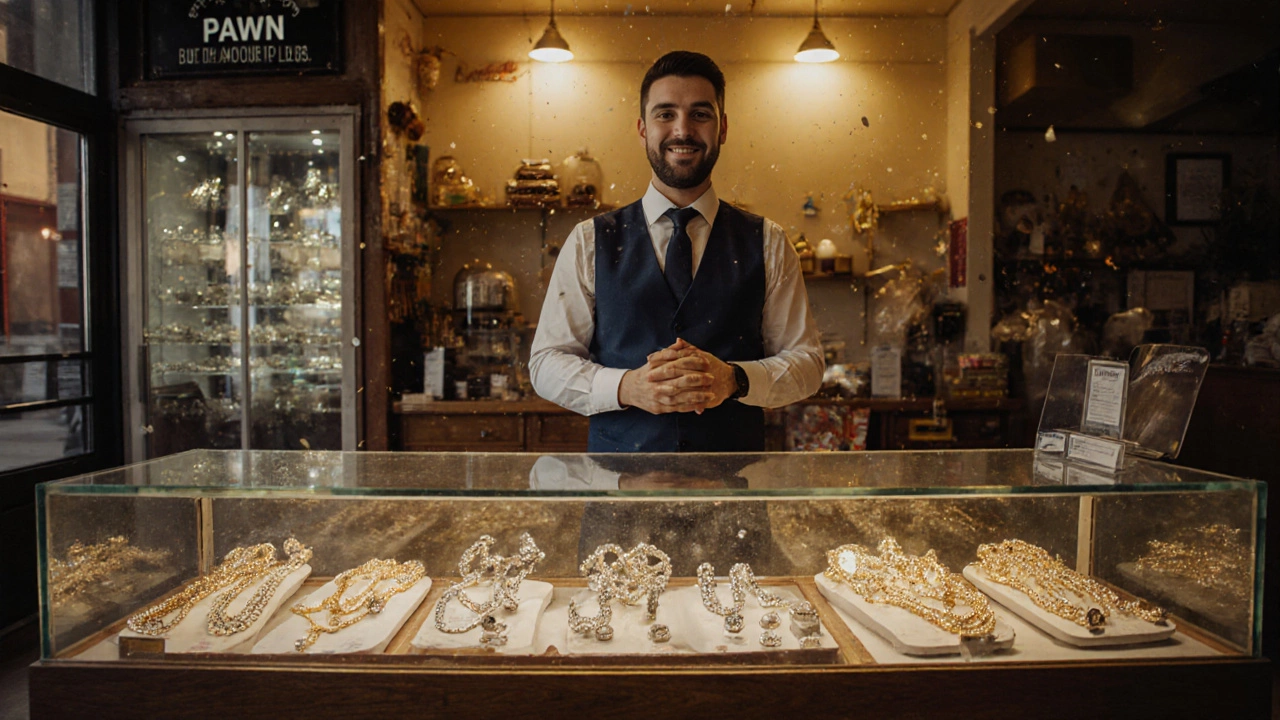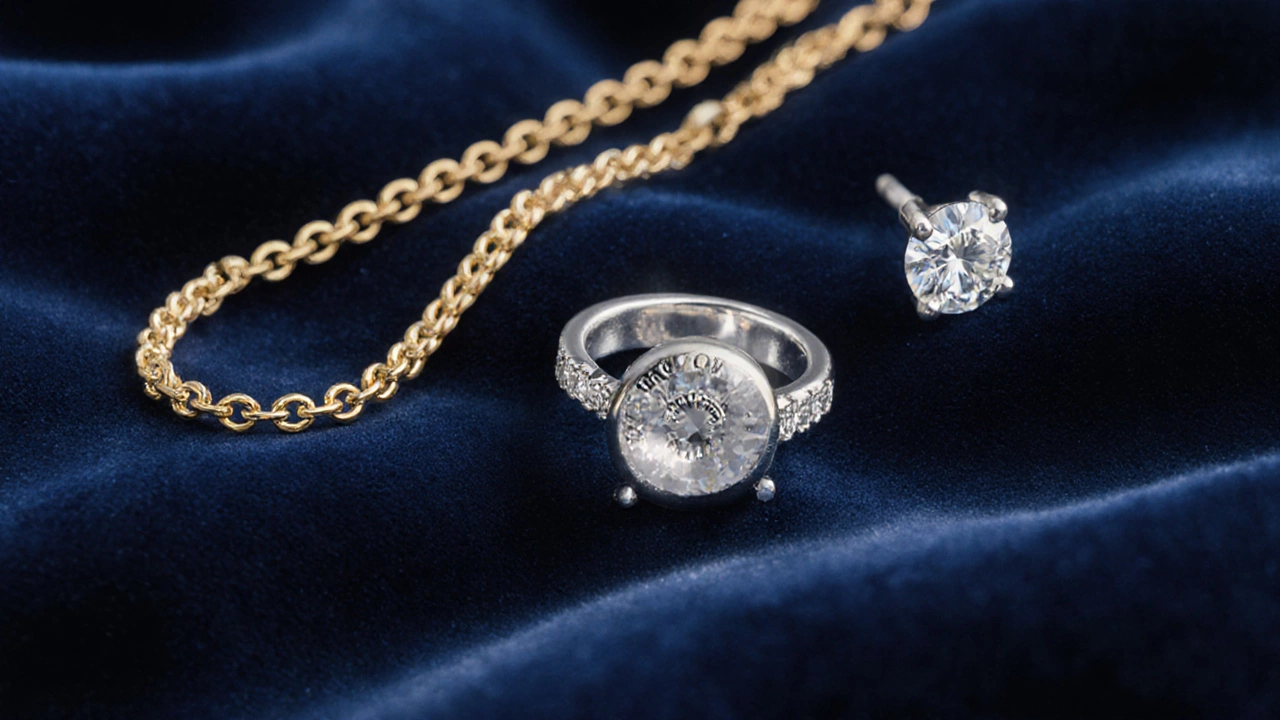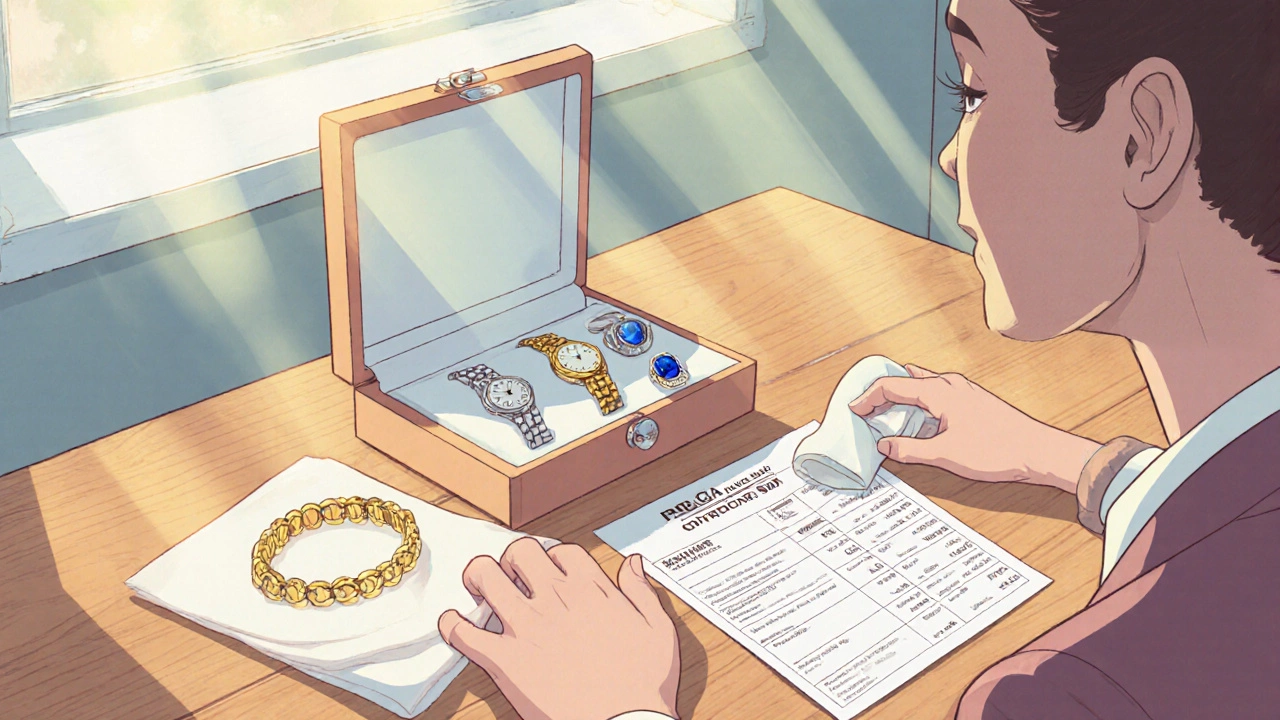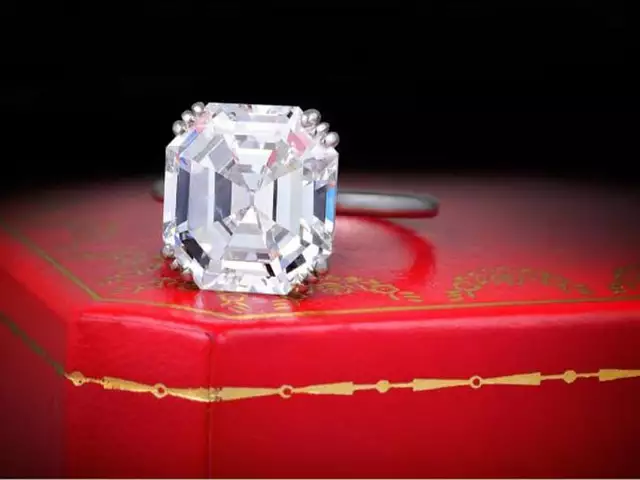
Pawn Shop Jewelry Valuation Calculator
Estimate Your Jewelry Value
Calculate potential cash value for jewelry at pawn shops based on material type, weight, and condition
Valuation Tips
Remember: Clean items and remove damage before selling to avoid price deductions.
Estimated Value
Your estimated value:
Range: $0.00 to $0.00
Factors affecting value:
- Material:
- Condition:
- Brand:
Ever walked into a Pawn Shop is a retail outlet where people can exchange personal items for short‑term loans or sell them outright and wondered why some pieces disappear within minutes while others linger on the counter? The answer lies in a mix of material, age, brand cachet, and how well the piece matches current collector demand. Below you’ll find the exact kinds of jewelry that consistently fetch the highest cash offers, plus practical tips for maximizing your return.
Why Material Matters Most
When a pawn broker evaluates a piece, the first thing they weigh is the intrinsic metal value. Gold and platinum are the heavyweight champions because their market price is transparent and easy to verify. Silver, while popular, often yields lower returns because its per‑ounce price is modest and the piece usually needs to be in excellent condition to be attractive.
For example, a 14‑karat gold necklace can net anywhere from 55 % to 70 % of the spot price, whereas a similar‑weight silver chain might only bring 30 % to 40 % of its melt value. That gap is why pawn shop jewelry enthusiasts focus on gold‑heavy items first.
Top‑Selling Precious‑Metal Categories
- Gold is a yellow precious metal, 24 karat being pure, commonly alloyed to 10‑, 14‑, or 18‑karat for durability. Classic gold chains, bangles, and lockets consistently command high offers.
- Platinum is a dense white metal valued for its rarity and durability, often used in high‑end settings. A single platinum ring can out‑value a gold piece of the same weight.
- Silver is a bright, soft metal commonly alloyed as sterling (92.5 % pure). Vintage silverware‑style bracelets sell well if they’re free of heavy tarnish.
Diamonds and Other Gemstones
High‑carat, well‑cut diamonds are the second biggest cash driver. Pawn shops look at the 4 Cs-carat, cut, color, clarity-and reference the Rapaport price list. A 0.75 carat, VS2, G‑color diamond set in a simple gold band can attract 40 %‑50 % of its wholesale value.
Beyond diamonds, colored gemstones such as emeralds, rubies, and sapphires add niche appeal. A deep‑blue sapphire mounted in a vintage Art Deco ring can be a surprise high‑ticket item, provided the stone shows good clarity and the setting is sturdy.
Antique and Estate Pieces That Shine
Collectors love anything with provenance. Items from the Victorian, Edwardian, or Art Deco eras often command a premium because they’re scarce and historically significant. Below is a quick guide to the most lucrative antique categories.
| Type | Primary Material | Typical Price Range (AUD) | Key Valuation Factors | Best‑Selling Tips |
|---|---|---|---|---|
| Gold Chains | 14‑18 K Yellow or White Gold | 200‑1,500 | Karate, weight, hallmarks | Provide original receipt, keep links untangled |
| Platinum Rings | Pure Platinum (950) | 500‑3,000 | Weight, brand stamp, condition | Show any warranty card, polish gently |
| Diamond Studs | Diamonds (any metal setting) | 300‑2,500 | 4 Cs, certification (GIA/HAA) | Bring GIA report, avoid heavy damage |
| Art Deco Vintage Ring | Platinum or Gold with Colored Gem | 800‑5,000 | Era authenticity, gemstone quality | Include any provenance docs, clean carefully |
| Estate Silver Bangles | Sterling Silver | 100‑800 | Condition, maker's mark, design rarity | Polish to a shine, avoid scratches |
| Luxury Brand Watches | Stainless Steel, Gold, or Titanium | 400‑6,000 | Brand, model, service history | Bring original box, proof of purchase |

Why Brand Name Matters
High‑end brands such as Cartier, Tiffany & Co., and Bulgari add a recognizable premium. Even a modest‑sized gold bracelet from Cartier can fetch 60 %‑70 % of its retail price because the name alone guarantees quality.
When you bring a branded piece, include any original packaging, authenticity cards, or service records. Those extras can bump the offer by 10 %‑15 %.
Common Pitfalls and How to Avoid Them
- Not cleaning the piece. A dull, tarnished surface signals neglect to the pawn broker and drops the price.
- Missing hallmarks. If you can’t verify metal purity, expect a lower offer.
- Ignoring provenance. Antique items without documentation often get undervalued; a simple appraisal can raise the offer.
- Leaving repairs undone. A loose clasp or cracked stone reduces confidence, leading to a bargain price.
Step‑by‑Step Guide to Getting the Best Deal
- Gather all documentation: receipts, certificates, original boxes.
- Clean each piece gently with a soft cloth; avoid harsh chemicals that might damage metal or stones.
- Research current spot prices for gold, silver, and platinum (e.g., via the Australian Bullion Association).
- Take clear photos from multiple angles-this helps you compare offers from different shops.
- Visit at least two reputable pawn shops. Ask each for a written quote and note the percentage of the spot price they’re offering.
- Negotiate: use the highest quote as leverage; many shops are willing to shave a few percent to close the sale.

Regional Insights: What Sydney Pawn Shops Look For
In Sydney’s market, gold purity is scrutinized rigorously because of the city’s strong cultural affinity for 22‑karat gold in South‑Asian communities. However, many pawn shops still favor 14‑ or 18‑karat pieces for ease of resale to mainstream buyers.
Australian‑made heritage pieces-like early 20th‑century opal jewelry-have a niche collector base. If you possess such items, consider contacting a specialized antique dealer before visiting a pawn shop; they might offer a better price.
Summary Checklist Before You Walk In
- Identify metal type and karat.
- Verify gemstone quality with a certificate if possible.
- Clean and photograph each item.
- Gather receipts, appraisal reports, and original packaging.
- Know current spot prices for precious metals.
- Visit multiple shops and compare written offers.
Frequently Asked Questions
What metal gives the highest cash return?
Pure gold (24 K) and platinum usually deliver the highest percentages of their market value because their prices are transparent and demand is steady.
Do vintage watches sell well at pawn shops?
Yes, especially if they’re from recognized luxury brands (Rolex, Omega, TAG Heuer) and come with original boxes and service records.
How much can I expect for a 14‑karat gold necklace?
Typically 55 %‑70 % of the current spot price, depending on weight, condition, and whether you have a hallmark proving purity.
Are diamond certifications necessary?
A GIA or HAA report boosts confidence and can raise the offer by 10 %‑15 %. Without it, pawn brokers often discount heavily.
Should I repair a broken clasp before selling?
If the repair is inexpensive, fixing it first usually pays off. A functional piece signals better overall care and avoids a lower price.


